Five Behaviors That Drive Team Results
Teams today are moving at a relentless speed in pursuit of meeting revenue and project goals. With a lot of energy and hard work, objectives are hopefully met and then it’s off to the next performance hurdle.
This frenetic pace is exhausting and it’s virtually impossible to feel caught up. There is always more to do and not enough time to do it. So, what are the options to feeling more in control? One way that we have found to make a difference is to examine performance beyond metrics and have the team assess its performance across the Five Behaviors model. You might have the most skilled employees working together on a team – but do their behaviors support efficient and effective performance? There is likely room for improvement.
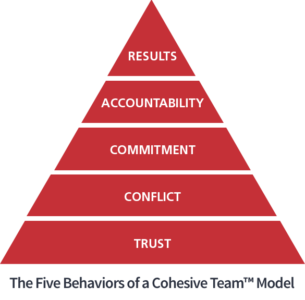 Let’s look at Wiley’s Five Behaviors of a Cohesive Team assessment. The Five Behaviors of a Cohesive Team brings together the principles of DiSC OR All Types (MBTI) with the best-selling Five Dysfunctions of a Team. This team 360 for intact leadership, project, or work teams evaluates team performance in the areas of: Trust, Conflict, Commitment, Accountability, and Results.
Let’s look at Wiley’s Five Behaviors of a Cohesive Team assessment. The Five Behaviors of a Cohesive Team brings together the principles of DiSC OR All Types (MBTI) with the best-selling Five Dysfunctions of a Team. This team 360 for intact leadership, project, or work teams evaluates team performance in the areas of: Trust, Conflict, Commitment, Accountability, and Results.
Hard-hitting feedback provides teams with valuable insights into the underlying behaviors that drive performance. Team members have the opportunity to engage in an authentic dialogue driving to the core of behaviors that negatively impact performance. Goals may be met – but did the team collaborate to the best of their ability and enjoy the journey to the destination?
The Five Behaviors model can be mistakenly interpreted as five distinct issues that can be addressed in isolation of one another. But in reality, they form an interrelated model, and neglecting even one of the behaviors can be potentially harmful to the success of a team.
On a scale of 1-5 with 5 representing ‘Almost Always’ and 1 representing ‘Almost Never’, evaluate how you perceive your team’s performance:
Building Trust
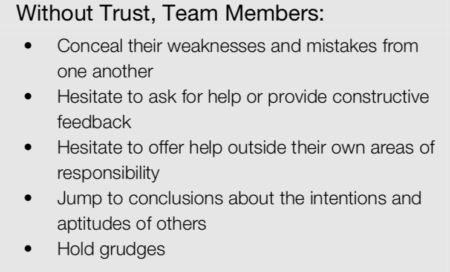
• Team members acknowledge their weaknesses to one another.
• Team members willingly apologize to one another.
• Team members are unguarded and genuine with one another.
• Team members ask one another for input regarding their areas of responsibility.
Mastering Conflict
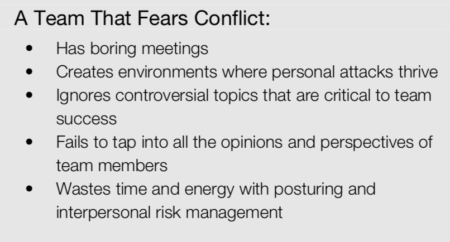
• Team members voice their opinions even at the risk of causing disagreement.
• Team members solicit one another’s opinions during meetings.
• When conflict occurs, the team confronts and deals with the issue before moving to another subject.
• During team meetings, the most important – and difficult – issues are discussed.
Achieving Commitment
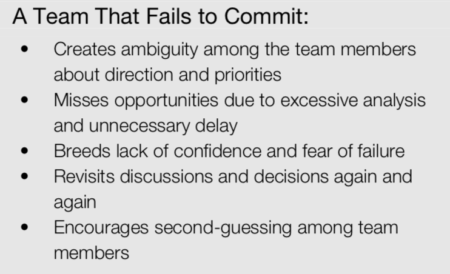
• The team is clear about its overall direction and priorities.
• Team members end meetings with clear and specific resolutions and calls to action.
• Team members leave meetings confident that everyone is committed to the decisions that were agreed upon.
• Team members support group decisions even if they initially disagree.
Embracing Accountability
• Team members offer unprovoked, constructive feedback to one another.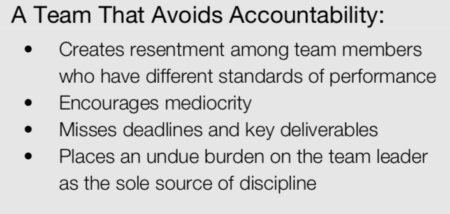
• The team ensures that members feel pressure from their peers and the expectation to perform.
• Team members confront peers about problems in their respective areas of responsibility.
• Team members question one another about their current approaches and methods.
Focusing on Results
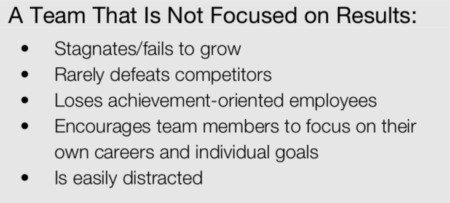
• Team members value collective success more than individual achievement.
• Team members willingly make sacrifices in their areas for the good of the team.
• When the team fails to achieve collective goals, each member takes personal responsibility to improve the team’s performance.
• Team members are quick to point out the contributions and achievements of others.
How did you score your team? 99% of the time, teams will see a significant skew across each measure. It’s easy to discuss goals and objectives based on metrics. Addressing behaviors is much more difficult and in some cases can be intimidating and frankly, scary – especially when there is not a high level of Trust across the team.
Stay tuned for our next post, ‘Building Trust using the Five Behaviors of a Cohesive Team’
Check out a Five Behaviors of a Cohesive Team Sample Assessment
Contact us to learn more about the Five Behaviors Model and the positive impact it has for teams
![]() To Learn More about Corporate Teams Profile Assessment offerings, visit our partner site: www.ProfileAssessments.com.
To Learn More about Corporate Teams Profile Assessment offerings, visit our partner site: www.ProfileAssessments.com.
